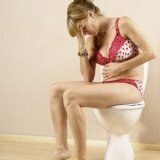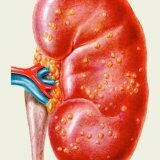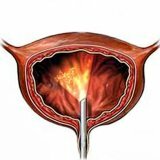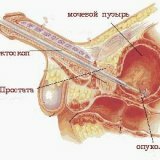Etiology and treatment of urolithiasis

Kidneys are the center of many serious human diseases, a large proportion of which is very common. Especially often, these diseases capture the body of pregnant women and recent women in labor, but often occur in other people, regardless of their gender, age and social status. It should be said that there may be several reasons for renal diseases, and all of them are very diverse, since to such diseases as, for example, cystitis, can lead both to the pathological problem with the kidneys and the sudden deterioration of health associated with the weakening of the body as a result of fetal production. Now we will talk about urolithiasis, which is probably the most common among all renal ailments. It is characterized by the formation of stones in the organs of the urinary system, which can occur both in the kidneys themselves, and in the ureter or bladder. Small stones are called sand, and they occur in about two out of three cases of stones. There is an opinion that urolithiasis affects mainly elderly people, but this assertion is groundless, as even infants suffer from this ailment quite often. Treatment of urolithiasis in them, of course, has its own characteristics.
Etiology and symptomatology.Etiology and treatment of urolithiasis are two issues that must be considered at least superficially for every person responsible for their health and the health of their loved ones. After all, no one is insured against this disease, and you need to know exactly how they manifest themselves and what you need to do if you have symptoms of a stone disease. Talking about the causes of the disease, you should first note the fact that the main cause is a disruption in the metabolism. To properly determine how to treat urolithiasis, you should determine a kind of "sub-causes" - the causes of this violation. Among these reasons, the hereditary predisposition is most often encountered, as well as the glandular function that surrounds the thyroid gland. In addition, often the causes of the disease are chronic gastritis and other pathologies of the gastrointestinal tract, as well as chronic diseases of the urino-genital organs - from prostatitis to asymptomatic bacteriuria. To the violation of metabolism can lead and osteoporosis with osteomyelitis, as well as simple bone injuries. Rare, but still distinct reasons include various causes of dehydration( infection, poisoning), as well as excessive consumption of acidic, spicy or salty foods. Also infrequent in the role of the causes causing the need for treatment of urolithiasis are lack of ultraviolet, vitamin D, too hot weather, hard water with a high content of salts, consumed as a drink.
Symptoms of urolithiasis are very recognizable, and in case the disease is open, several symptoms will necessarily be expressed in each of the patients. So, among them stand out kidney colic, low back pain, frequent urination accompanied by painful sensations. .. No less obvious symptoms are hematuria( blood in the urine that appears there after physical exertion or severe pain in the genito-urinary organs), clouding of urine, especiallyoften found in pyelonephritis. There are also with urolithiasis symptoms such as high fever, reaching forty degrees, swelling and high blood pressure.
If you describe the pain that occurs with urolithiasis, then they are blunt and can be both bilateral and one-sided. With sudden movements of the body and with physical activity, the pain intensifies. When a stone enters the ureter and moves along it, sharp renal colic occurs. An attack of such pain can last up to several days until the stone leaves the urine outward. The pain subsides, then resumes, while giving to the groin, and sometimes to the genitals and even to the legs. Especially painful is urolithiasis of the bladder. When urinating, the patient experiences pain, which for sensitive organs turns into real anguish, and urination itself is intermittent and very rapid.
Treatment of illness.
Treatment of the disease is a fairly simple procedure, but the diagnosis, which is necessary before its beginning, is much more complicated. It is necessary to use not only ultrasound, but also other methods of research, among which is the introduction into the human body through an incision of a special tube through which the stones can best be examined by estimating their number, position and size. After all, it is from these characteristics that the method of treatment of urolithiasis depends. With renal colic, it is highly desirable to remove the stone, which can be done both with the help of surgical intervention, and much more progressive method - remote-wave lithotripsy. The stone in this case is affected by strong radiation of ultrasound and is crushed by this sound on sand, which leaves with urine independently and is practically painless. Nevertheless, it is better to remove very large stones after all, surgically. Well, in the more mild cases of urolithiasis, treatment is often limited to various dissolving drugs and a special diet. By the way, such drugs not only remove stones, dissolving them, but also prevent their reappearance. Antibiotic therapy is also very effective, so in simple cases, doctors often resort to it. However, it is often combined with diets and various medications, which gives a much greater effect in terms of saving time, because treatment is much faster when using several different methods at once.



